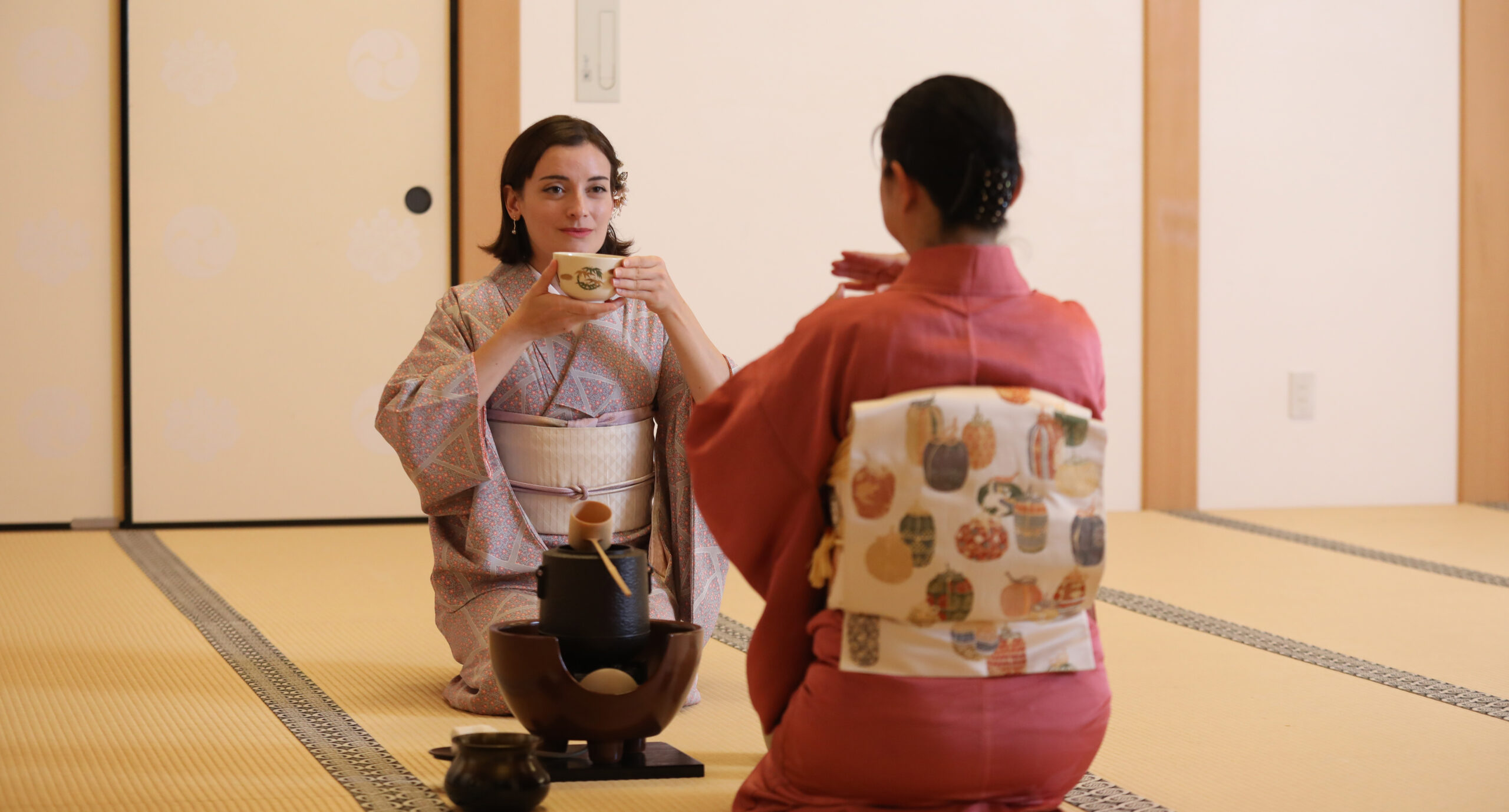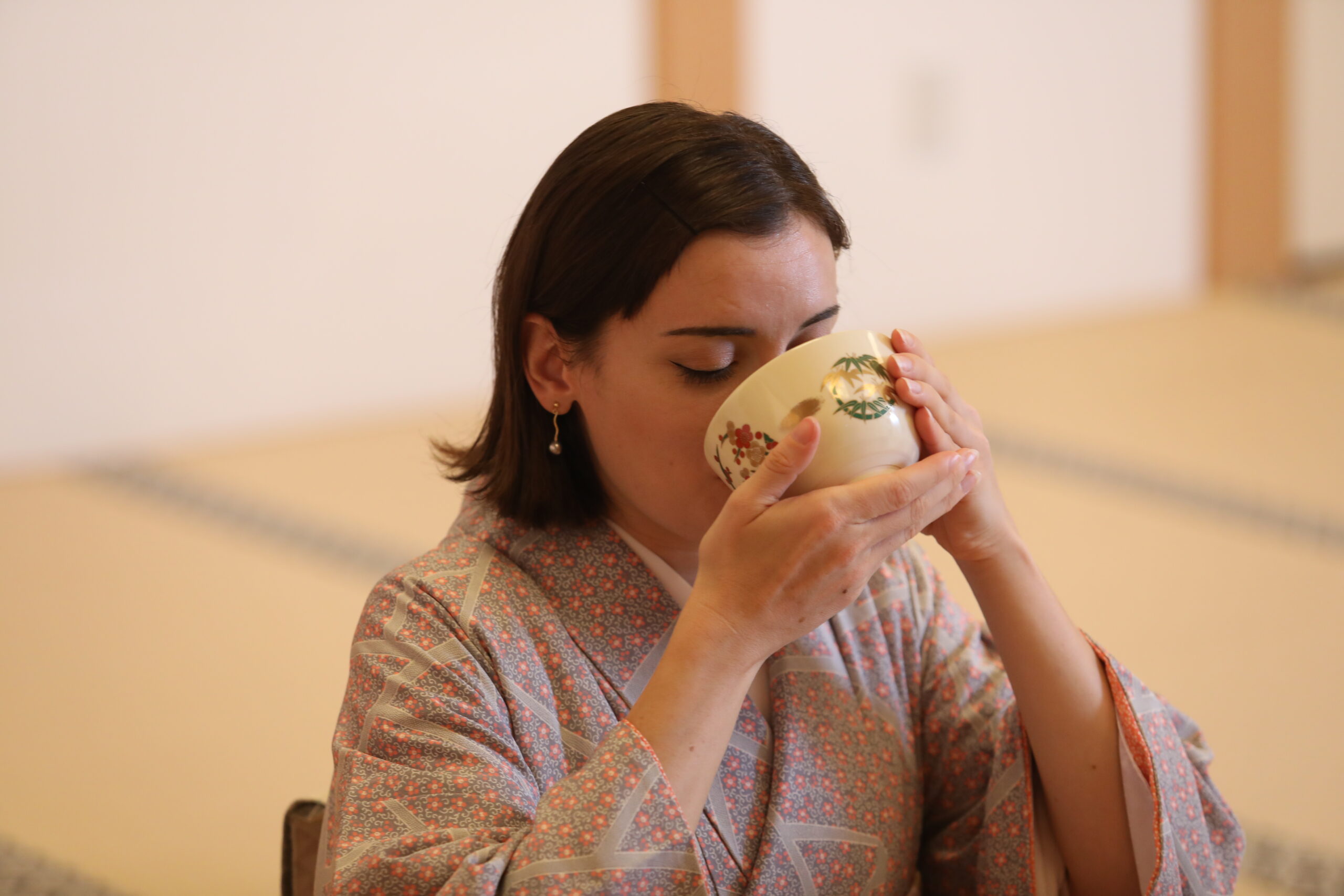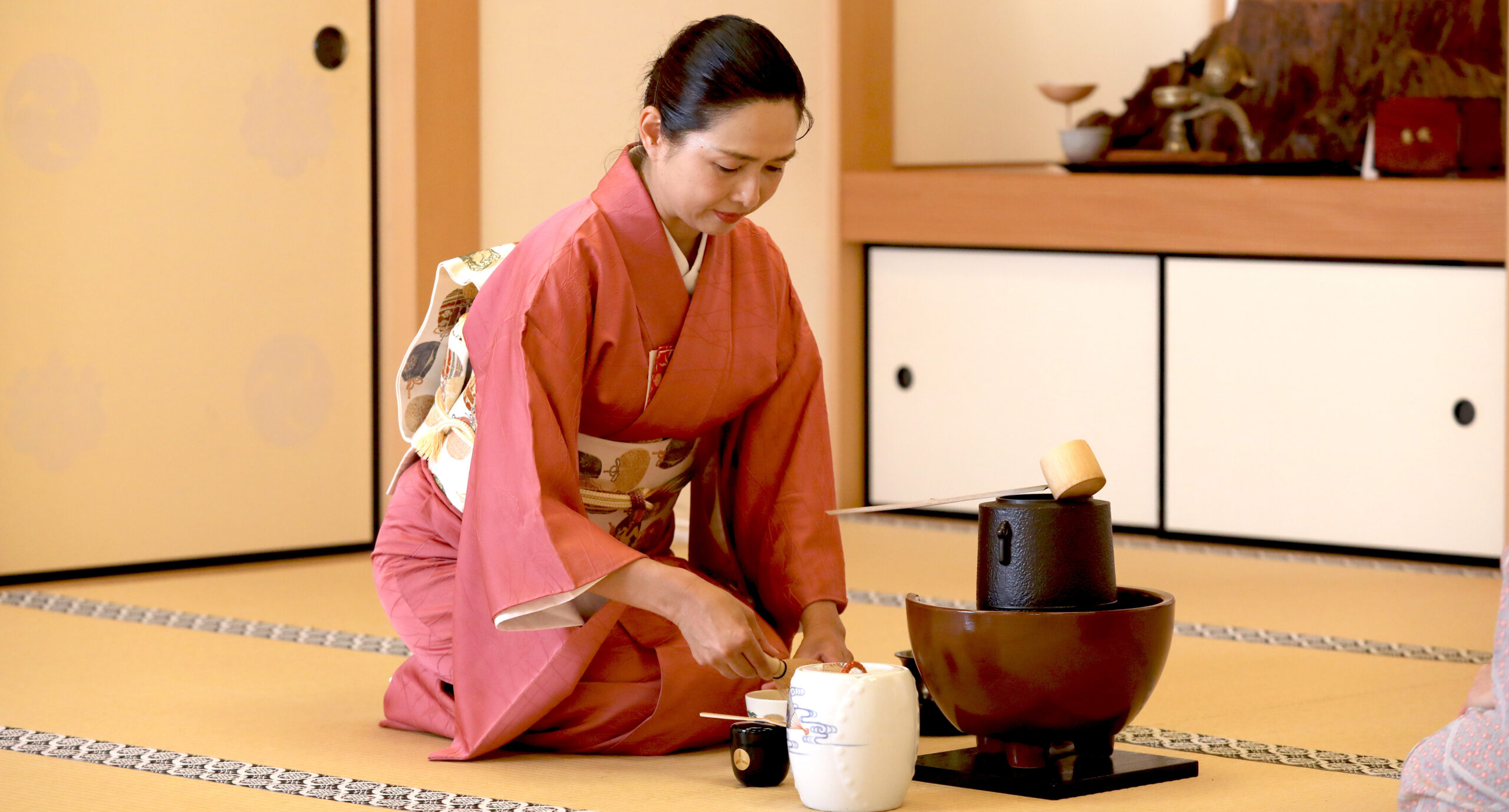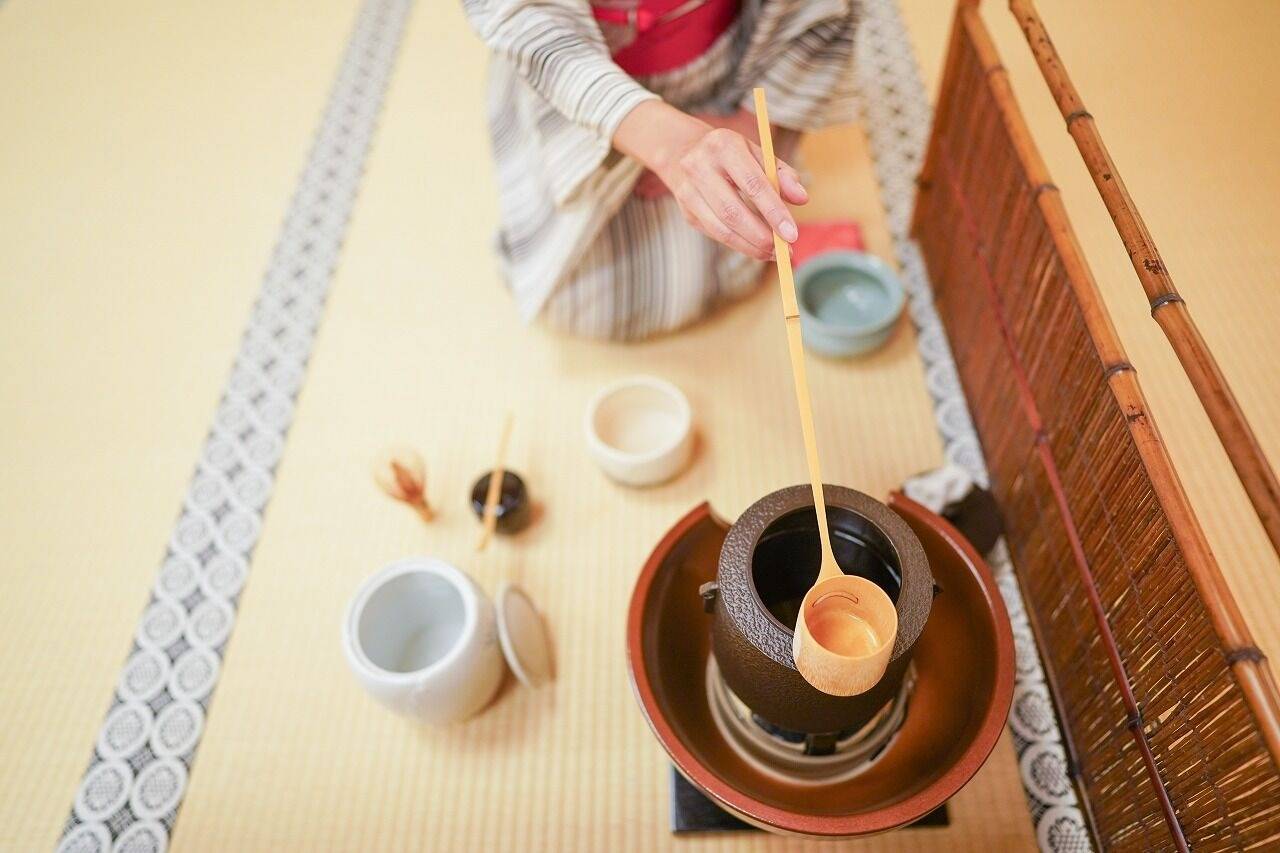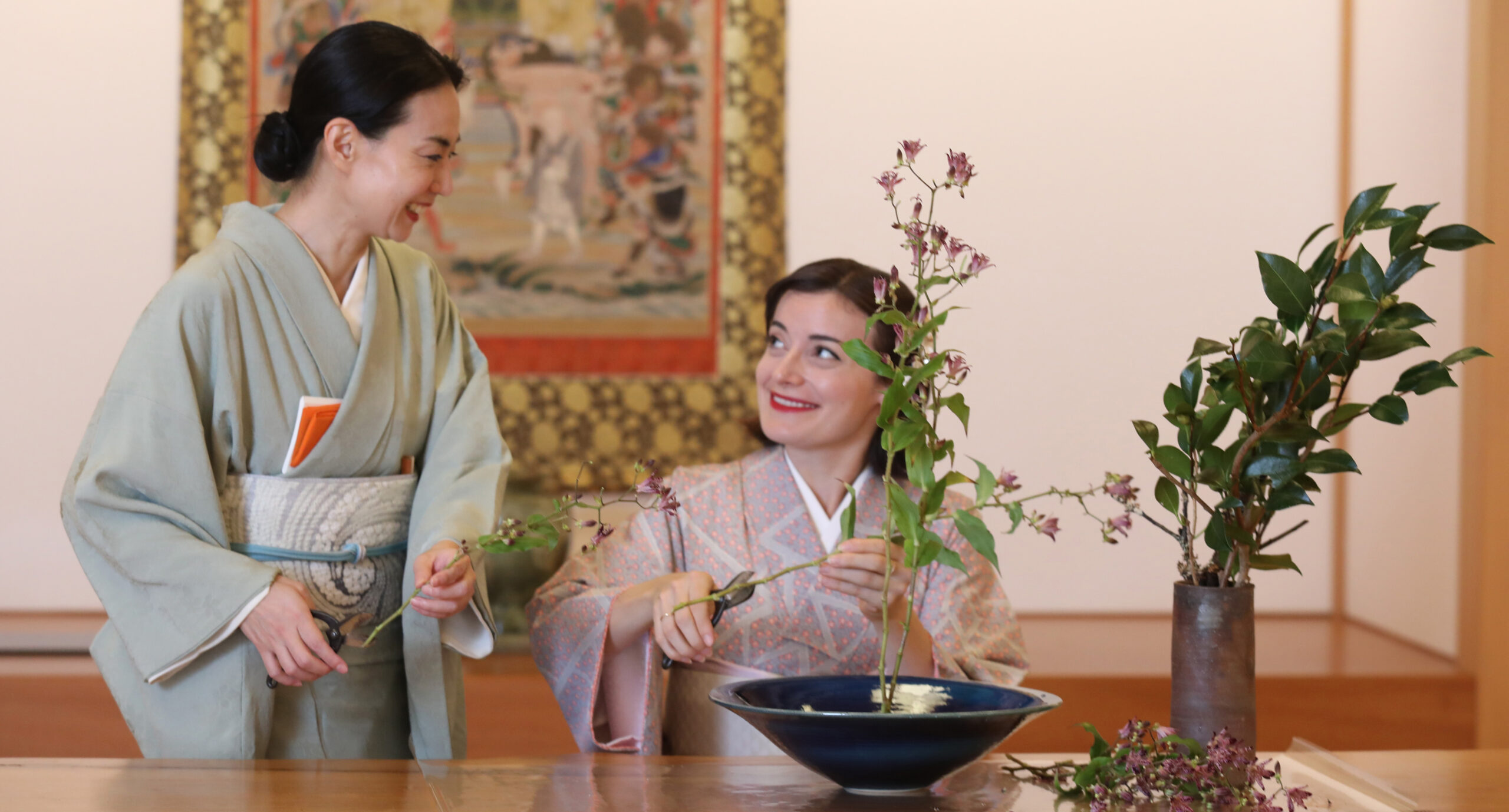The tea ceremony consists of the preparation of the tearoom, sweets, and the tea itself. The serving of tea usually comes with casual chatting about seasonal changes. However, in the preparation phase, participants keep silent. That is why the tea ceremony is considered a meditational activity. During the tea ceremonies, the host prepares the tea and serves it to the guests but does not drink it because everything is for the pleasure of the guests. The procedure of Japanese tea ceremony steps is called temae in Japanese.
There are two types of tea ceremonies: chakai (informal tea ceremony) and chaji (formal tea ceremony). Chakai, also known as the typical tea ceremony gathering, only lasts 45 minutes even though the training takes years. Chaji, on the other hand, involves the participation of senior tea masters and the service of traditional kaiseki meals which can last up to 4 hours. Major Japanese tea ceremony schools such as the Urasenke School and Omotesenke School follow slightly different steps and procedures.
There are different types of tea ceremonies as there are rituals needed for the different seasons. This is the simpler shozumi ceremony steps below, which includes a kaiseki meal. Preparation is taken seriously before the tea ceremony can begin.
Traditionally, the tea house and surrounded gardens would be cleaned and tidied up. Invitations to guests should be sent weeks in advance. The tea room itself needs special attention; there are no chairs and tables as you are required to sit on the woven tatami mat floor. The doors are traditionally made of paper and cleaning requires that both the mats and doors be replaced. In a full tea ceremony, special guests would be consulted beforehand on what type of tea and food should be served.
The day beforehand is when the kaiseki meal is prepared. This is a traditional Japanese meal that consists of many small dishes of delicacies that typically consist of rice, vegetables, and soup. These are well known for their high-grade ingredients, careful preparation, and presentation.
Japanese sweets are usually prepared as well to contrast the bitter taste of the tea. More modern or simpler foods are prepared if newcomers are going to be present at the tea ceremony. The hot water is prepared just before the ceremony begins and is placed in the kama or iron pot.
The first step of the ceremony is welcoming guests to the tea room. The host or teishu would open the paper door and would already have all the utensils placed on the tatami mats ready to begin (or would be brought in shortly after).
Certain movements are very important to perform as a practiced host, such as standing in one smooth motion and bowing often during the ceremony. Once everyone is seated, the kaiseki meal is presented to the guests and eaten.
The sweets would be ritually presented to the main guest once the meal is finished. In a full service, a guest’s social ranking would give them special rituals to perform during the ceremony. The main guest or shokyaku would get to accept the sweets. As the tea is about to be prepared, the main guest usually asks the host where the utensils were made and who made them.
As the tea is being prepared, this is now the beginning of the ceremonial steps of the occasion. Traditionally this is all performed in silence. Firstly the tea bowl or chawan is picked up and put down with the tea whisk inside the bowl.
Next, the tea jar or natsume is moved in front of the host. A silk cloth is now folded and is wiped on the tea jar before the jar is placed in front of the cold water. While the host is still holding the silk cloth, the chashaku or tea scoop is now picked up and cleaned. The tea scoop is then put on top of the tea jar.
Now the tea whisk or chasen is put next to the tea jar. A ladle or hishaku is held while the lid of the iron pot of warm water is opened. The ladle is used to take a scoop of hot water and pour it into the tea bowl. The ladle is then put on the iron pot while the host gently cleans the tea bowl and tea whisk using warm water. This water is then discarded into a wastewater bowl. The tea bowl is then cleaned with a hemp cloth.
The tea scoop and tea jar are then picked up. Usually, one and a half scoops of tea or matcha are placed into the tea bowl. The ladle is then picked up again and a full cup of hot water from the kama is poured slowly into the tea bowl. Any leftover hot water is put back into the iron pot.
A sign of a talented host is if the tea is made correctly as it takes years to know how much matcha and hot water is needed. The tea whisk and tea bowl are now picked up as the host quickly whisks the tea powder. A pale green foam is formed and should settle to the center of the bowl.
Now the tea is served to the guests. The host cleans the lip of the bowl once last time and presents it to the main guest. The shokyaku walks forward and drinks the tea first. They are the only guest allowed to make comments about the quality of the tea made. After they have finished, hot water is added and the bowl is cleaned. The host will then make the tea again in a similar fashion until all the guests have had a drink.
After everyone has finished, the shokyaku asks if everyone has completed their tea. The host cleans each utensil separately. The discarded water bowl is hidden as much as possible during this step. Freshwater is added to a kama equal to the amount of hot water taken during the ceremony. Most of the utensils and tea items are then carried away to the preparation area of the tea house.
Finally, the host will kneel next to the door and thank the guests for coming to the tea ceremony.

